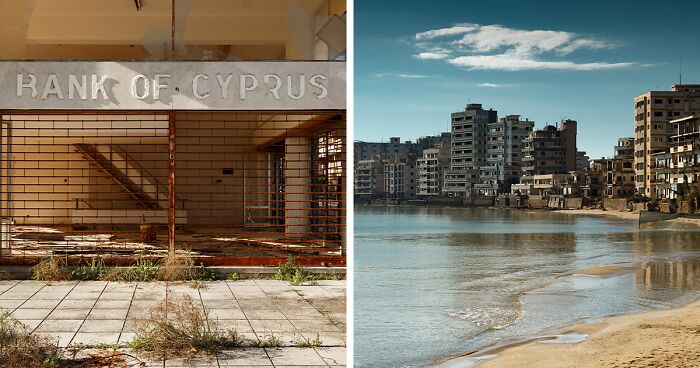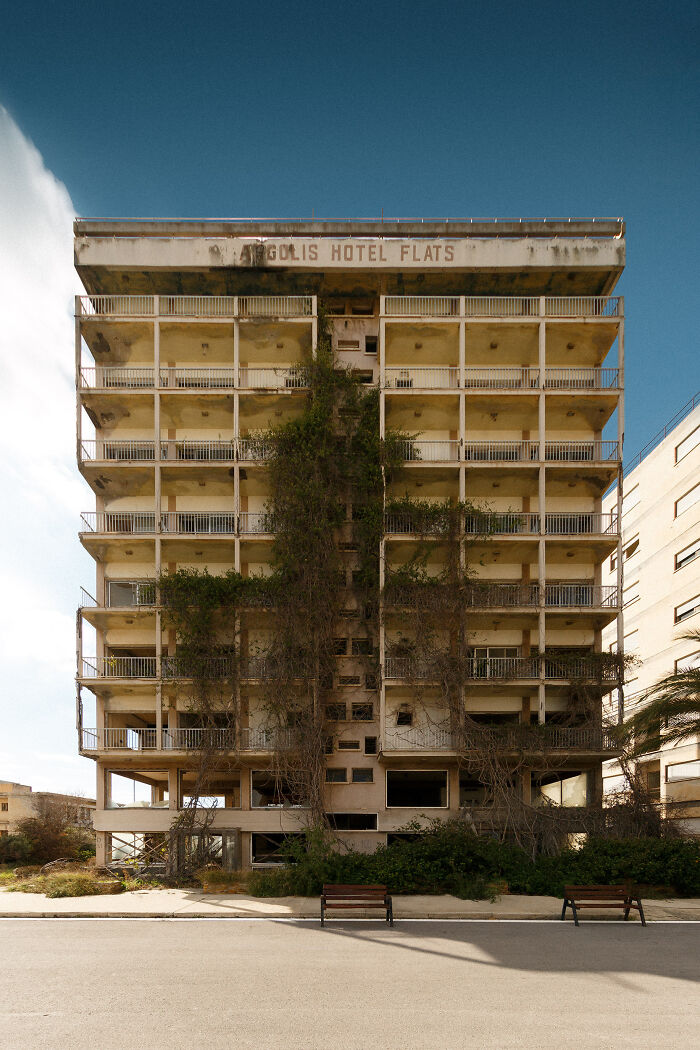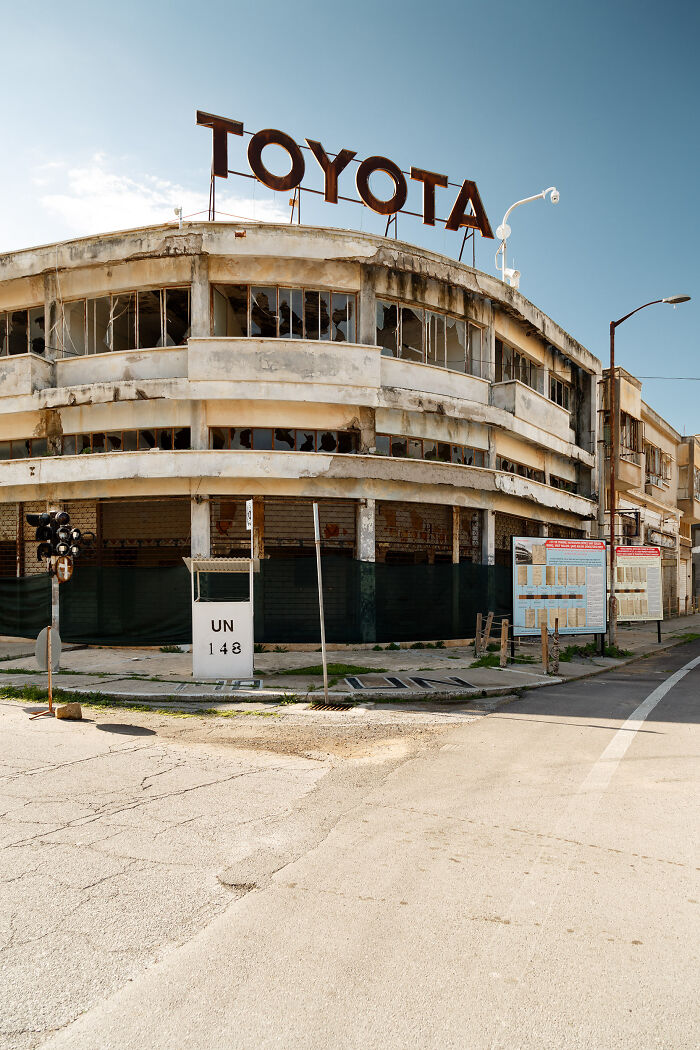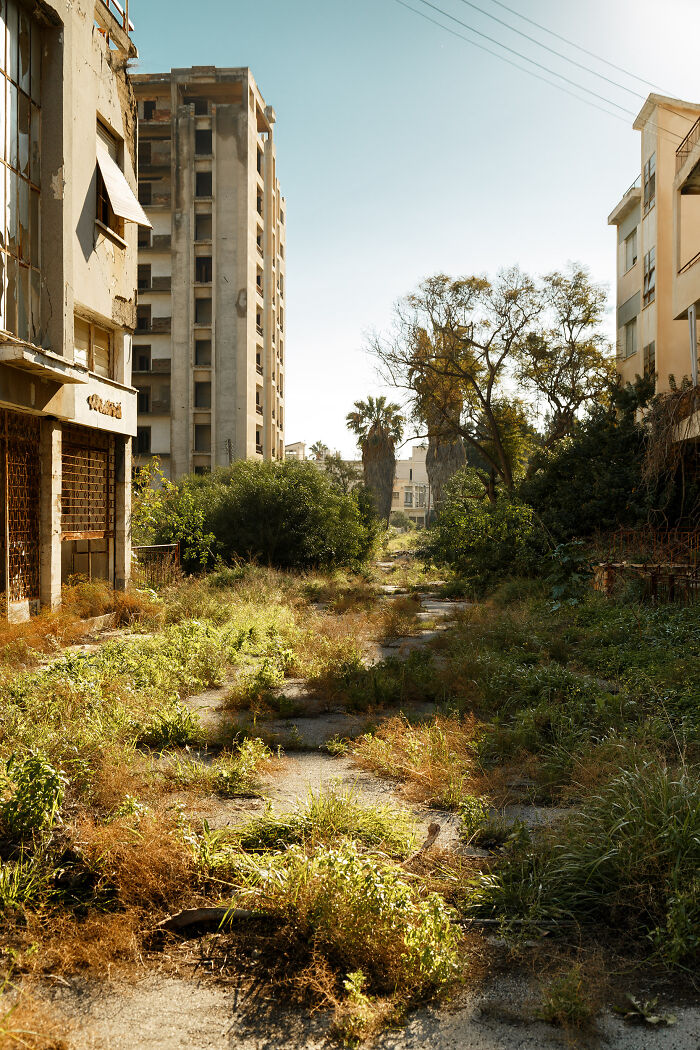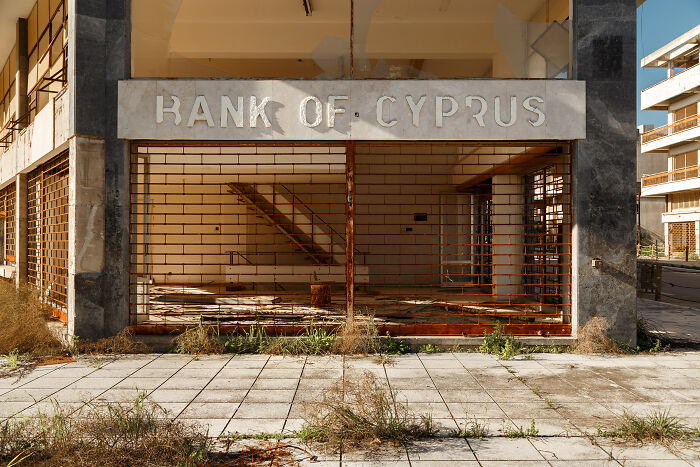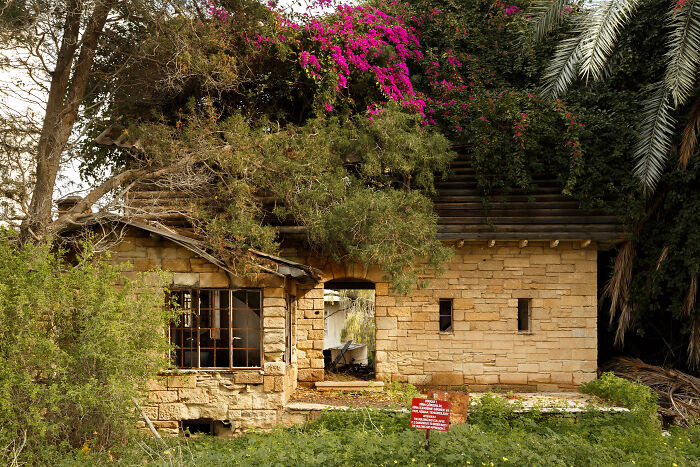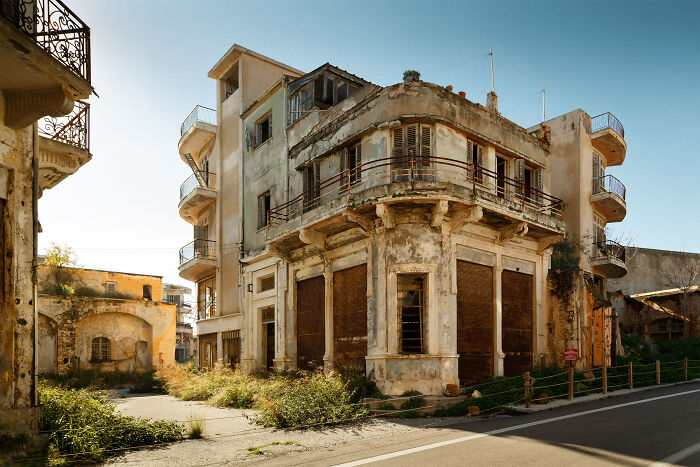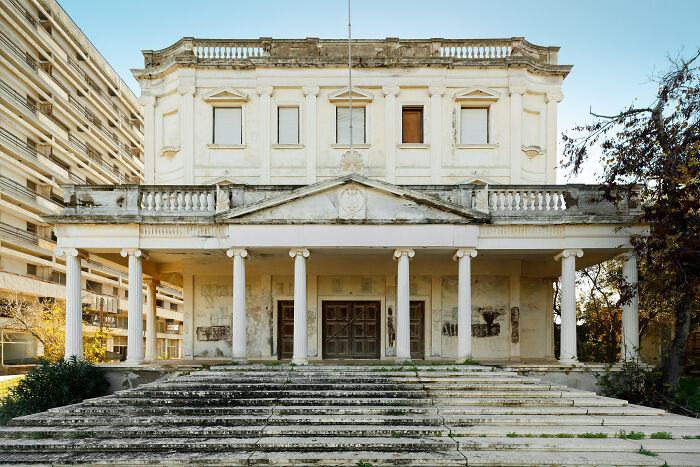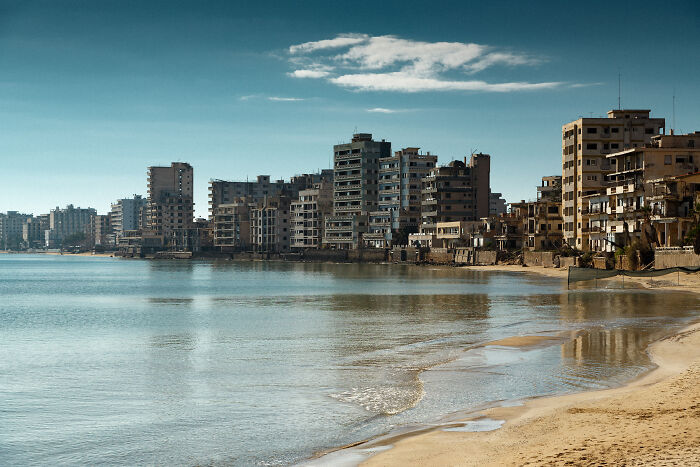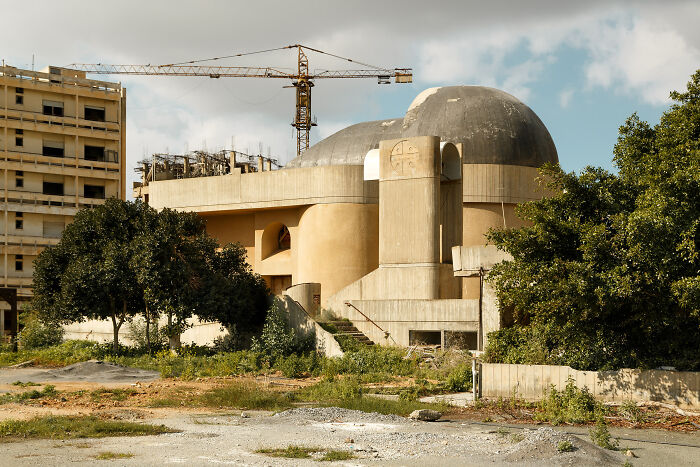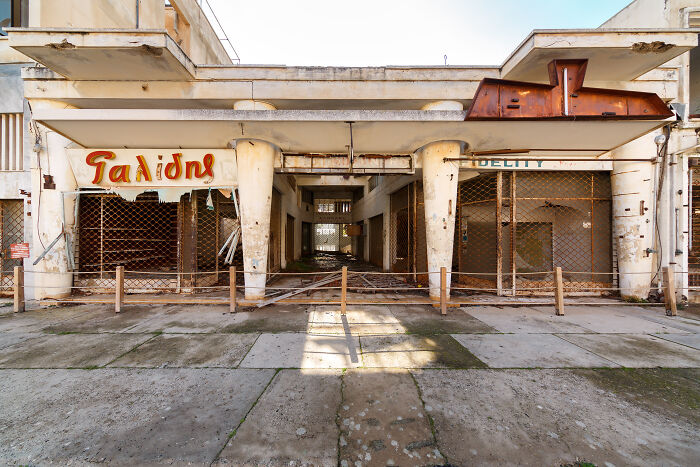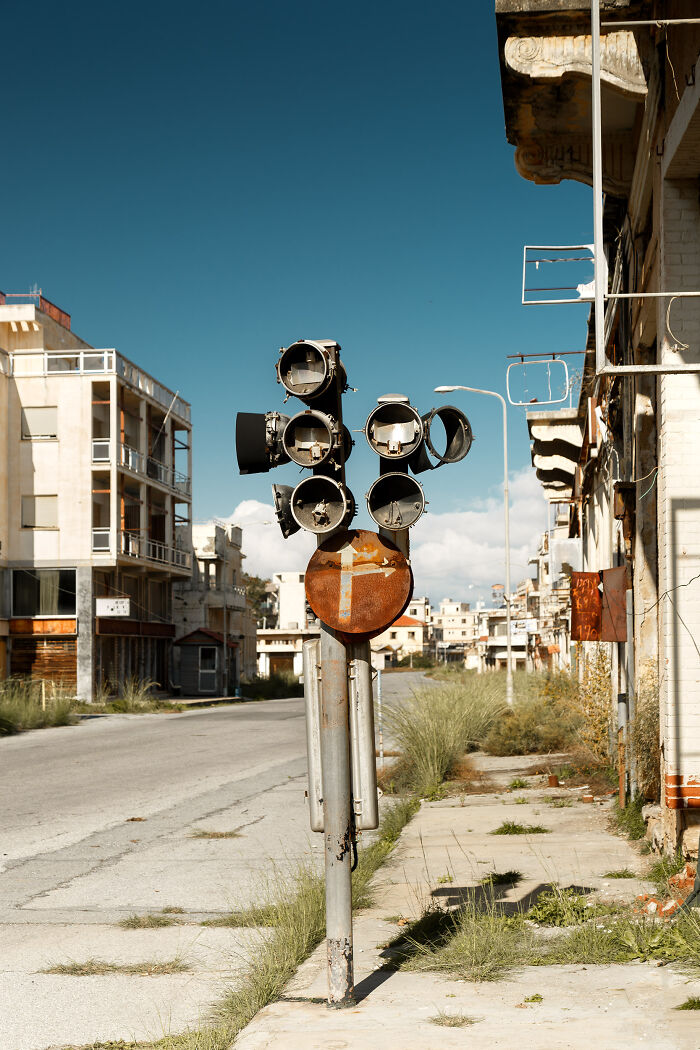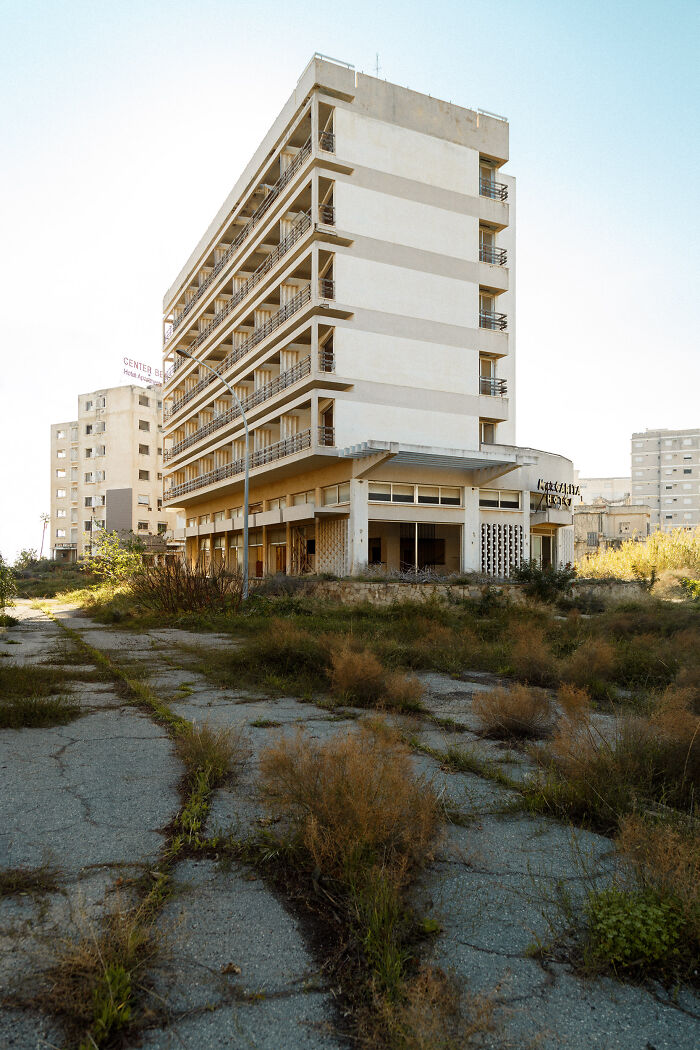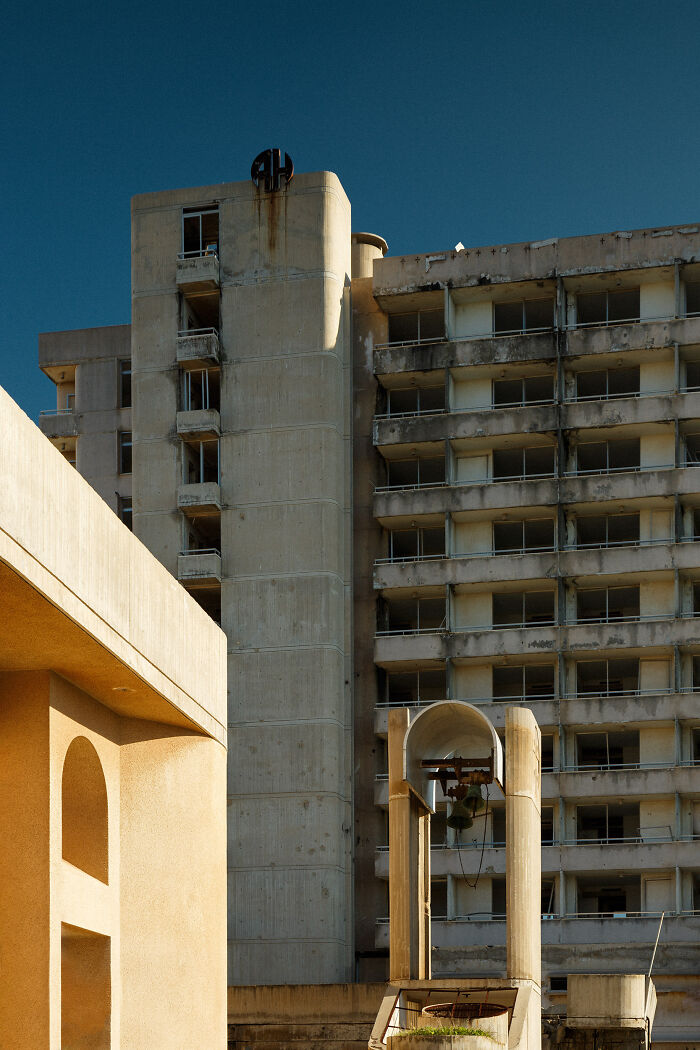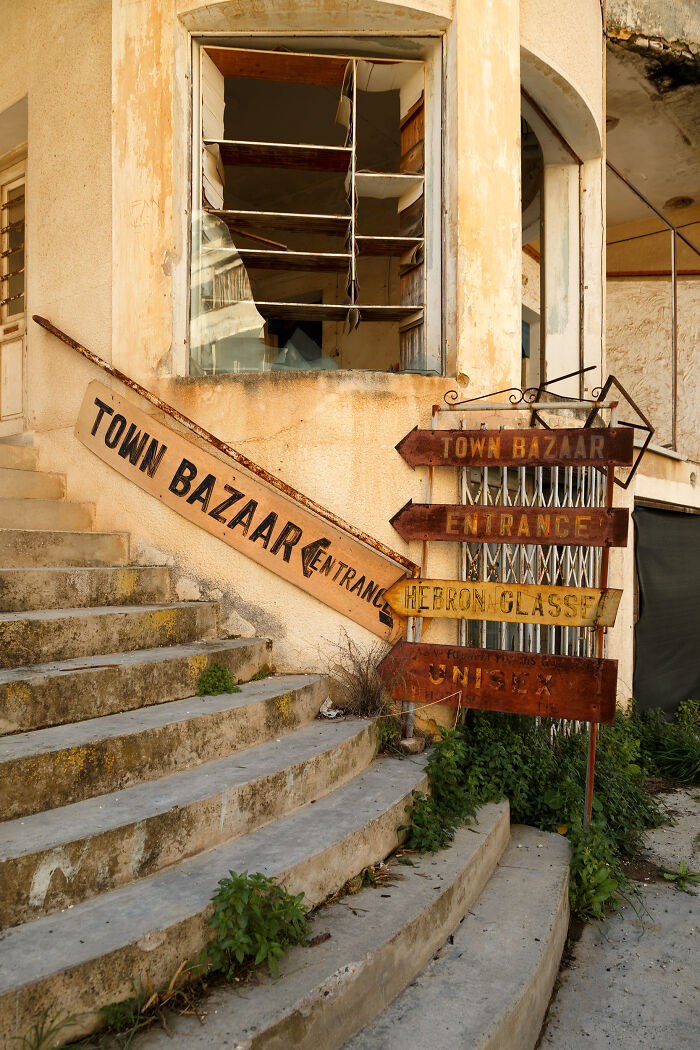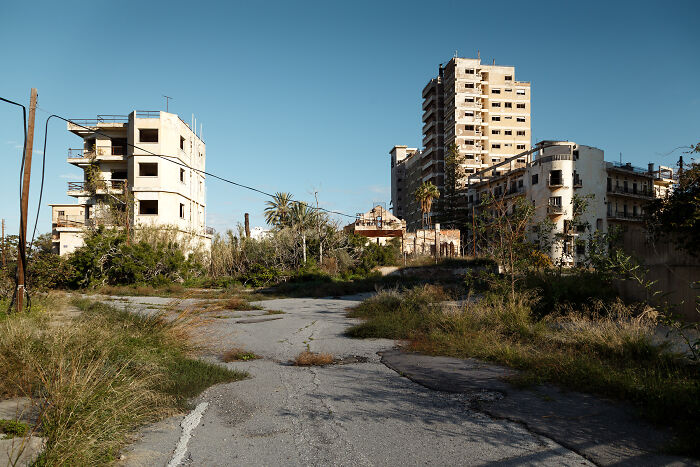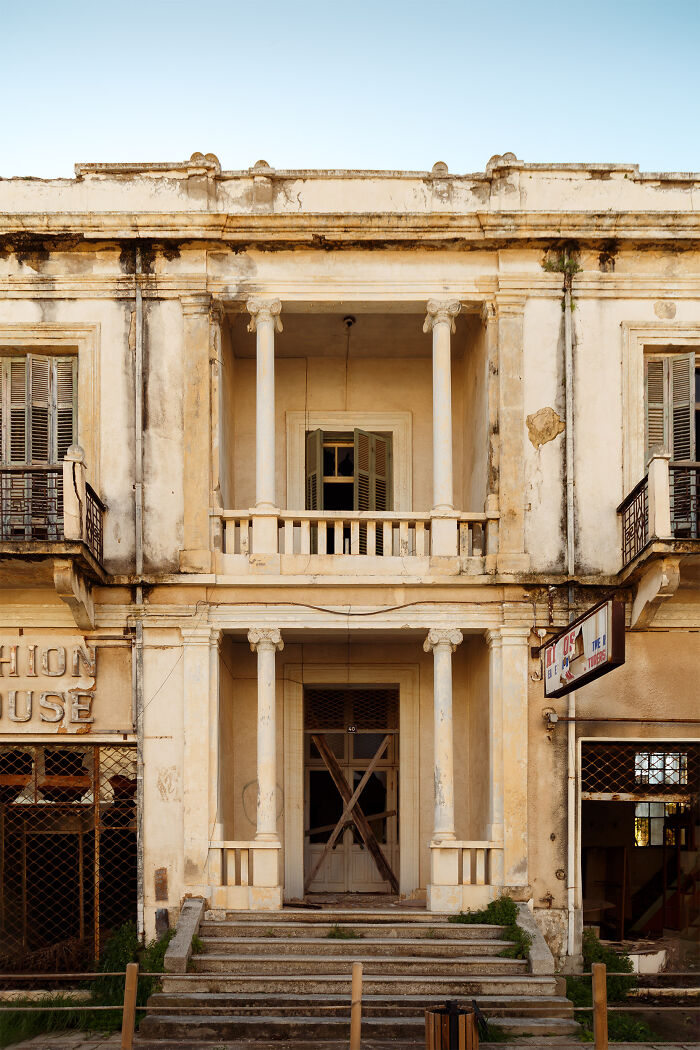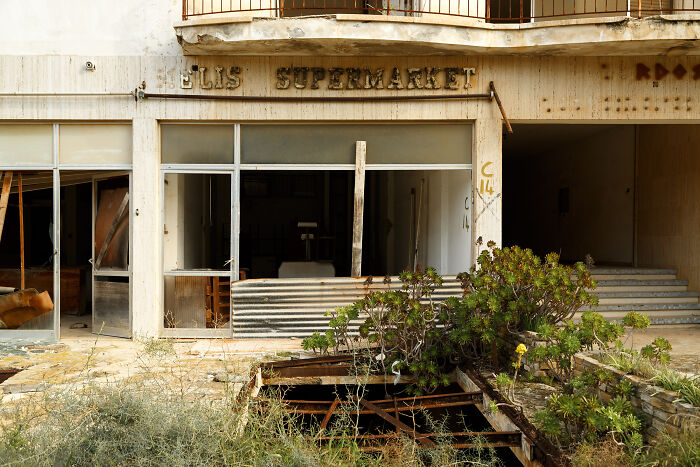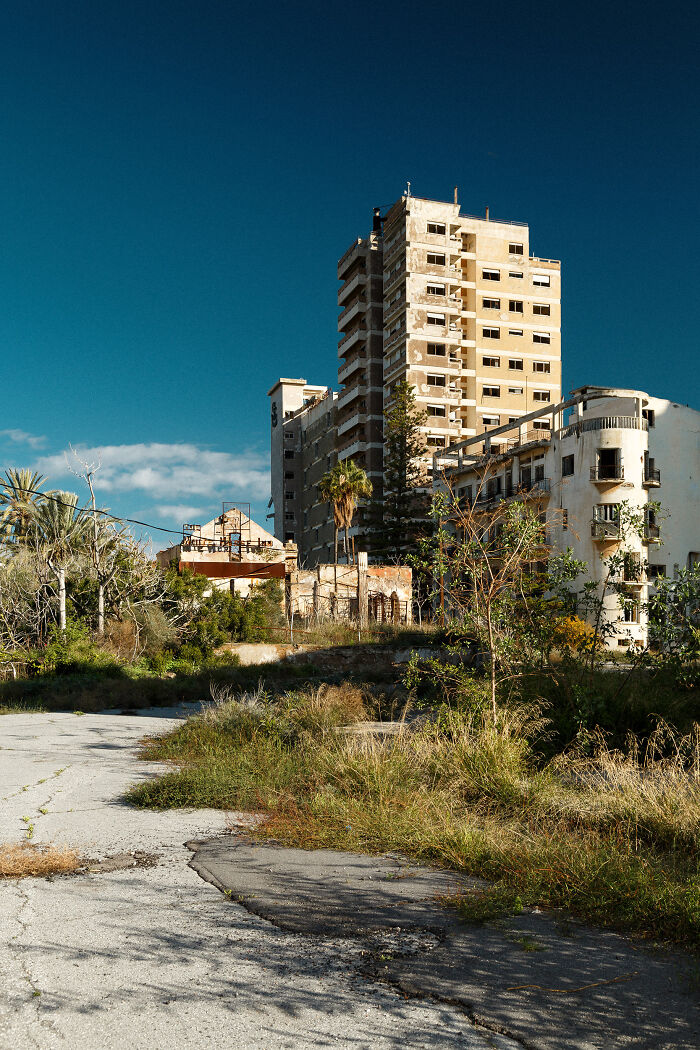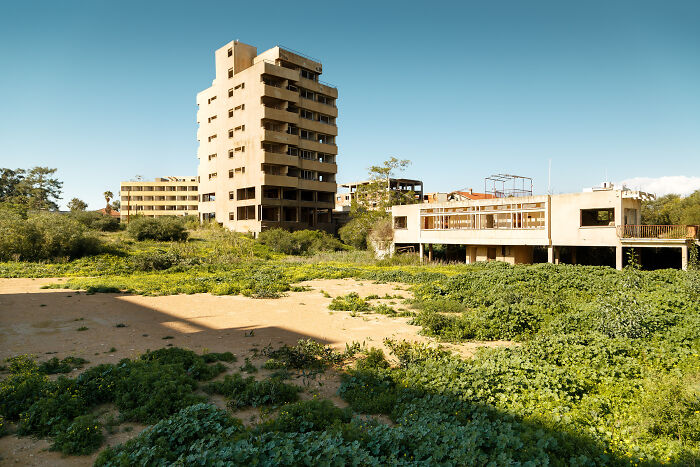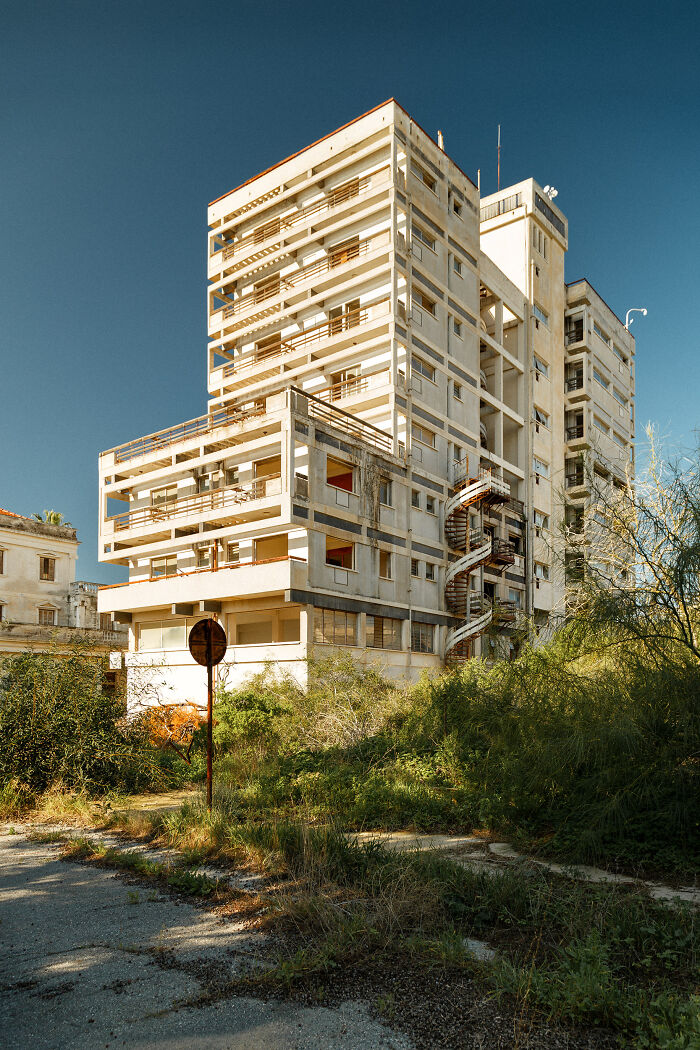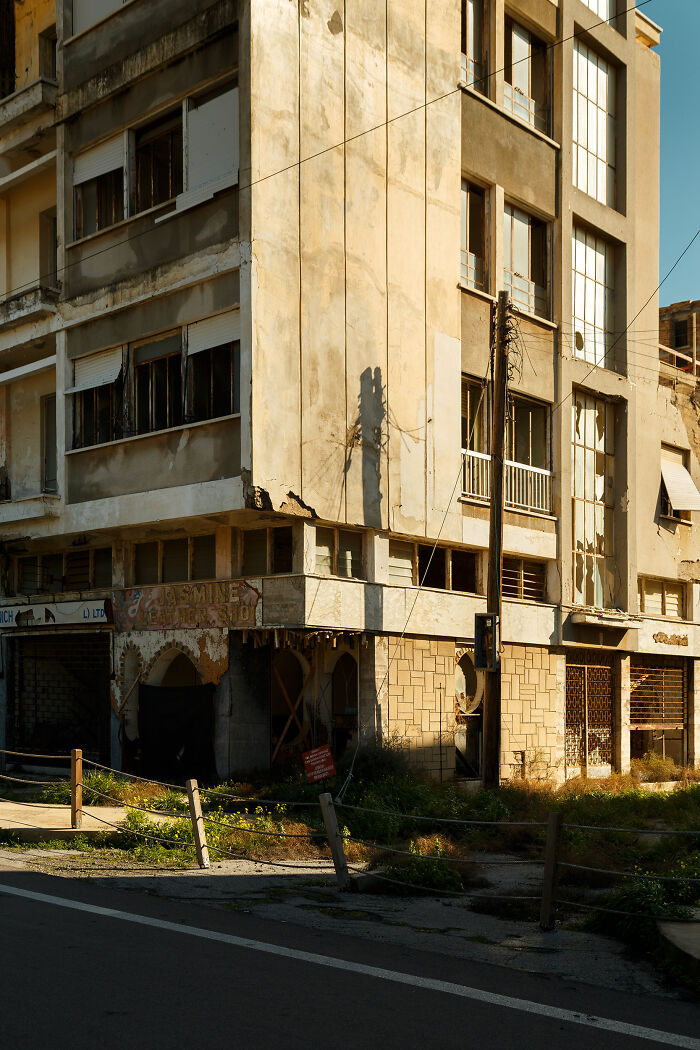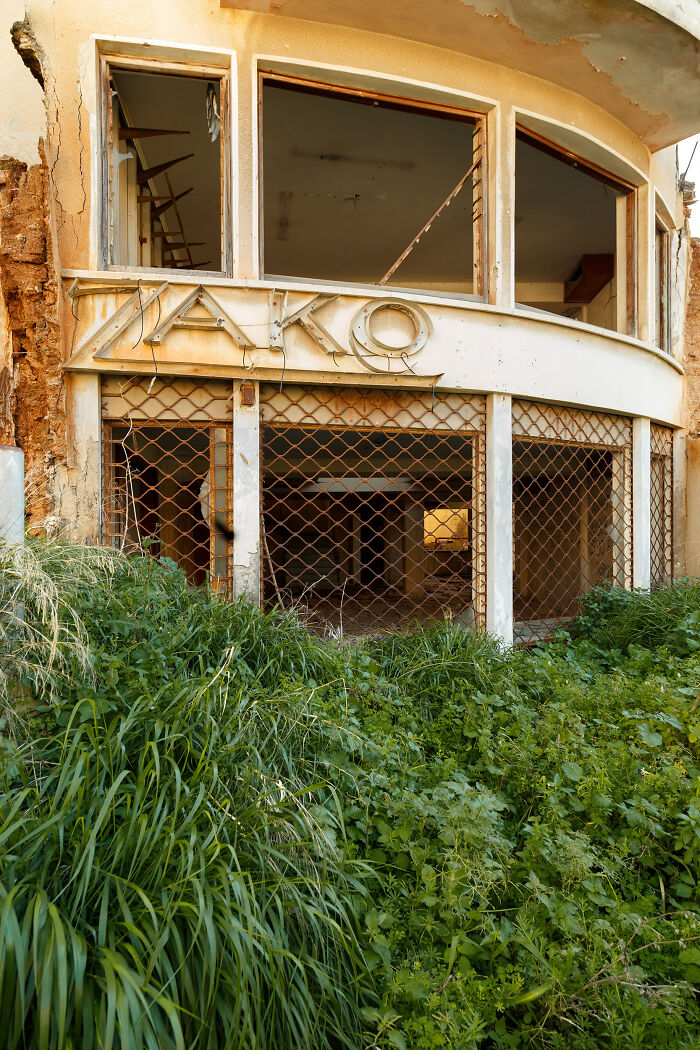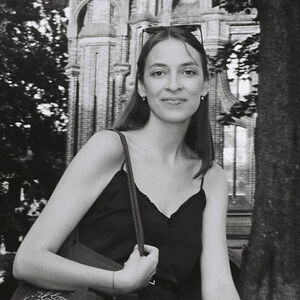My name is Dimitri Bourriau and I am a French artist also known as 'Jahz Design'. I graduated in graphic design, but I've always been interested in history and architecture.
Time stood still in 1974 after intense bombings. Famagusta-Varosha sank into silence. A symbol of the division of Cyprus, it has since been forbidden access. Turkish President Recep Tayyip Erdogan authorized part of the city to open in 2020.
I had the chance to photograph the largest ghost town in the world under the control of the Turkish army.
More info: jahzdesign.com | Instagram | Facebook
This post may include affiliate links.
It was very impressive to enter Varosha. We were the only two people in the ghost town with our bikes as we went there early in the morning. Even being alone, the tension was present because there are security cameras everywhere in the city and it followed our every move.
It was impressive to see how everything remained frozen in time, only the houses were emptied and the shops looted. The signs are rusty but you can easily have a peek through the windows and see how everything is inside!
I focused my photographic point of view on rust and the remains of life in Varosha before its abandonment. The small details visible in my photos testify to the passing of time. I particularly focused on nature and its recovery from the work of man. The main street (the one set up by the army) was not what interested me the most. It was especially the small streets around where man did not take back the ground that was the center of my lens! For me, they tell more stories!
The first challenge was to cross the border, because normally with a rental car, we are not supposed to go to the north of the island. The contrast between the South and the North was impressive. The rental cars have red plates in Cyprus, which made us very visible even to the eyes of passers-by. The military was following our car with binoculars from the corridors.
We arrived early at the opening of the neighborhood and we were completely searched by police. Our passports were held during our visit. We later saw that these measures applied only to foreigners.
Once in the city, we were followed by police in civil clothes, by the army, and by UN soldiers who watched the area. Therefore, the photo taking was a little more complicated to be sure to have no military personnel in the photos (which is strictly forbidden).
There are no objects that belonged to the ancient inhabitants, the city having been completely emptied after the invasion. What is interesting to see is the bullet and missile impacts that are clearly visible on the buildings. The absence of anyone has not affected my compositions more than usual because it is rare for me to meet people in the places I visit.
So stark. When I see pictures like these, so many questions come to mind.......where are all the animals? Are all the buildings just completely empty? Did everyone take everything with them? I am amazed at how clean the streets seem to be. Perhaps all the debris has already blown away? I wonder if there are other parts of the city that are less pristine, that have more remnants of the human past? ...... just my random thoughts.
Well, it's been deserted since 1974 , so not a whole lot would be left, the original occupants would have taken everything when they were driven out to the greek side......
Load More Replies...I once swam out from Fireman's Bay (Near Paralimni) and got as close to Famagusta as I dared. It really is this erie. (Note: it's a long swim, and when I did this I was very fit and I also did my research about how close it was safe to get.)
The airport is fascinating. There is an airliner in the hangar that I have sat in and played with the controls and has it's windows shot out and is riddled with bullet holes. Another airliner sits dragged halfway up a slope to the north that was going to be converted into a restaurant but the Turks put paid to that. The airport itself is full of luggage, manifests and personal belongings and the hangar is full of old tools. Very creepy indeed. * I was serving on the UN and also managed to get inside Famagusta dressed as a member of the Swedish UN contingent who are the only ones allowed in there.
Noticeable absence of facts. It's called the biggest ghost town in the world. Fine....but....how big? What was its history? What was it's peak population? What livelihoods were pursued? Etc etc.
Not a ghost city any more, but that's not necessarily good news. North Cyprus is resettling the city, including land from which Greek Cypriots were forceably removed. The city once held 39,000 people in a mere 2 1/2 square miles.
Given how long it’s been abandoned it’s surprising how little plant life there is. Dry environment I suppose. It would be fascinating to do a botanical audit of the place.
I was living in Famagusta when this happened, (10 Havana St, about 4 roads back from the seafront) I remember seeing the warships firing at the seafront, was evacuated soon after!!!!
So stark. When I see pictures like these, so many questions come to mind.......where are all the animals? Are all the buildings just completely empty? Did everyone take everything with them? I am amazed at how clean the streets seem to be. Perhaps all the debris has already blown away? I wonder if there are other parts of the city that are less pristine, that have more remnants of the human past? ...... just my random thoughts.
Well, it's been deserted since 1974 , so not a whole lot would be left, the original occupants would have taken everything when they were driven out to the greek side......
Load More Replies...I once swam out from Fireman's Bay (Near Paralimni) and got as close to Famagusta as I dared. It really is this erie. (Note: it's a long swim, and when I did this I was very fit and I also did my research about how close it was safe to get.)
The airport is fascinating. There is an airliner in the hangar that I have sat in and played with the controls and has it's windows shot out and is riddled with bullet holes. Another airliner sits dragged halfway up a slope to the north that was going to be converted into a restaurant but the Turks put paid to that. The airport itself is full of luggage, manifests and personal belongings and the hangar is full of old tools. Very creepy indeed. * I was serving on the UN and also managed to get inside Famagusta dressed as a member of the Swedish UN contingent who are the only ones allowed in there.
Noticeable absence of facts. It's called the biggest ghost town in the world. Fine....but....how big? What was its history? What was it's peak population? What livelihoods were pursued? Etc etc.
Not a ghost city any more, but that's not necessarily good news. North Cyprus is resettling the city, including land from which Greek Cypriots were forceably removed. The city once held 39,000 people in a mere 2 1/2 square miles.
Given how long it’s been abandoned it’s surprising how little plant life there is. Dry environment I suppose. It would be fascinating to do a botanical audit of the place.
I was living in Famagusta when this happened, (10 Havana St, about 4 roads back from the seafront) I remember seeing the warships firing at the seafront, was evacuated soon after!!!!

 Dark Mode
Dark Mode  No fees, cancel anytime
No fees, cancel anytime 




